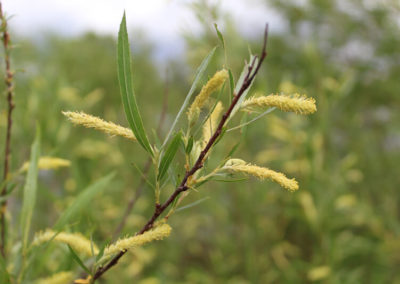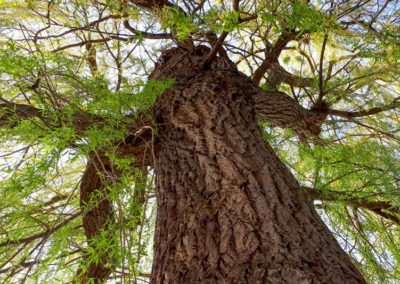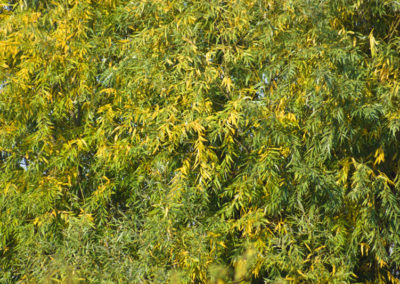
Black Willow

Pollen Type: Tree
Cross-Reactivity: Other Willows
HS Allergy Extract: Willow, Black; Tree Mix #5, Tree Mix #11
Family: Salicaceae
Genus/Species: Salix nigra
Common Names: Willow
Distribution: Throughout the United States.
Locations: Found in wet soil along streams and at the edges of ponds, lakes, and river bottoms. They are also found in swamps and sloughs.
Pollination Method: Insect or wind-pollinated
Pollinating Period: Spring
Description: Black Willow is a fast growing tree that is native to eastern North America. It grows from 10’-60’ tall. Its bark varies from dark brown to blackish in color and develops long narrow cracks and openings as it ages. Its leaf blades are typically bright green and can grow up to 5”. They are long, thin, taper to an elongated tip, and are toothed around the edges. Its twigs and branches are yellowish and are often brittle at the base. Black Willow is a dioecious species, meaning male and female flowers grow on separate trees. Other than during the flowering season, the sexes appear the same. Female trees produce inconspicuous flowers, meaning they are simple, small, and difficult to see. Male catkins grow in clusters and are typically pollinated by insects or wind. When the seeds ripen, their exterior capsules open and release the hair-covered seeds. These hairs act as wings to help carry the seeds long distances.
Photo Gallery:





